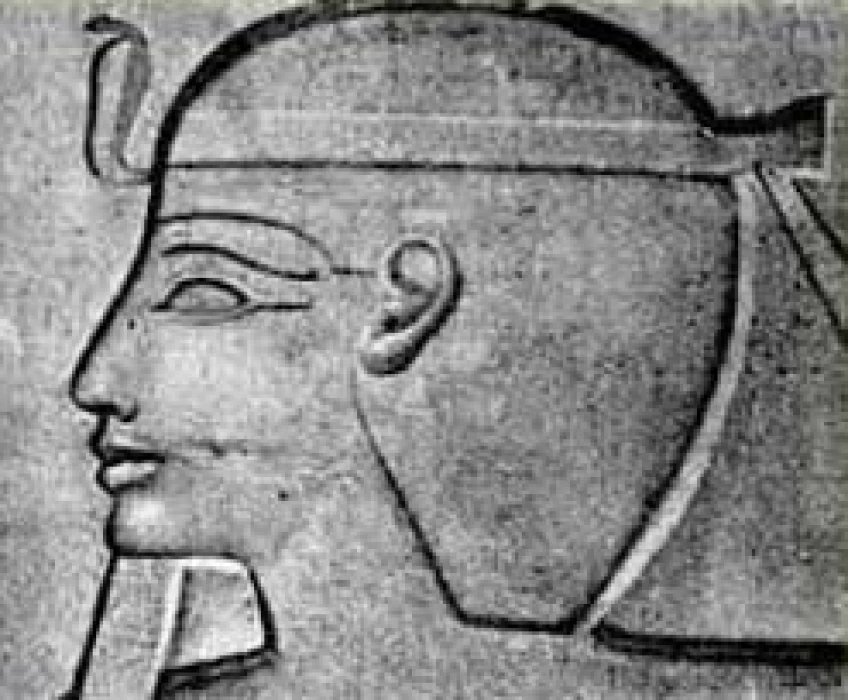
The Twenty-Second Dynasty in Ancient Egypt
The Twenty-Second Dynasty in Ancient Egypt
The XXIInd dynasty originated in Libya and settled in Bubastis, then in Tanis, where its kings had their tombs built. Under the 21st dynasty (1070/69-945), the Libyan military had become an important political factor. They had been integrated into the Egyptian army and police force during the New Kingdom (1549 or 1540-1080). This was particularly true of soldiers who were descendants of former Libyan prisoners of war, the Méchouech (or Meshwesh or Mâchaouach).
They had settled in the Delta and gradually extended their territory as far as the Fayoum, where they held the kingdom's armed forces. Their chiefs became very powerful, and one of them, Sheshonq I, took advantage of the anarchy into which the country had fallen at the end of the 21st dynasty to seize power on the death of Psusennes II (959-945) of Tanis. He established himself as Pharaoh and founded the 22nd Dynasty.
It is very difficult to interpret the facts about the history of this dynasty. The kings placed themselves under the protection of the god Amun, and worked with the High Priests of Amun in Thebes, who had retained power over the region and played an important role. These priests often came from the royal family, and in some cases were even the Pharaoh's own son. The rulers of the dynasty delegated a large part of their power to them, which did not prevent them from declaring themselves sovereign of the whole country.
It should also be noted that in the regions of Heracleopolis and Hermopolis Magma, in central Egypt, Princes, after having been appointed by the legitimate Pharaohs of the Delta, became autonomous and held independent reigns. During this period, the administrative capital remained Memphis. The temples, which had benefited from large numbers of staff and donations during the new New Kingdom, became the indispensable link in Egypt's chain of command, but also the cause of the decline in royal power.
In 853, northern Egypt was threatened by the Assyrians under Salmanasar III (859-824). Osorkon II was forced to form an alliance with several states in the Levant to repel the invaders. This coalition was victorious at the battle of Qarqar (or Qarqur or Karkar) on the Orontes. In 839, under Takelot II, an uprising by the Theban priesthood was ruthlessly suppressed by the Pharaoh.
But a few years later, the rebellion broke out again. Dynastic rivalry and competition between different lines of kings for the throne, plus the coexistence of several ‘kingdoms’: the High Priests of Thebes, Heracleopolis and Hermopolis Magma, weakened the dynasty and led to civil war. In 818, the dynasty lost control of the central Delta to another chieftaincy. The leader of this new chieftaincy, a Bubaste prince, Petubastis I (or Padibastet I, 818-793), took advantage of this upheaval and the succession disputes in year 8 of Sheshonq III (825-773) to be crowned King of Leontopolis (or Taremou). He founded the XXIIIrd dynasty and was recognised by Heracleopolis, Memphis and Thebes. The Twenty-second Dynasty then retained control only over the kingdom of Tanis.
As if the country wasn't already exploded enough, in 747, under the reign of Sheshonq V and Iuput II (754-715) of the XXIIIrd dynasty in Leontopolis, Egypt was divided again with the creation of three new kingdoms: Heracleopolis, Hermopolis Magma and Lycopolis (or Asyut). In 727, the dynasty was again powerless to prevent the creation of another kingdom in Sais, that of the XXIVth Dynasty. The Libyans wanted to secure the support of all the clergy.
They therefore respected the traditional religious principles of the Egyptians. They also continued the monumental policy in favour of temples, particularly at Abydos, Bubastis, Heliopolis, Tanis and Thebes (Karnak). This period also saw the development of the art of bronzework, which became of the highest quality.














